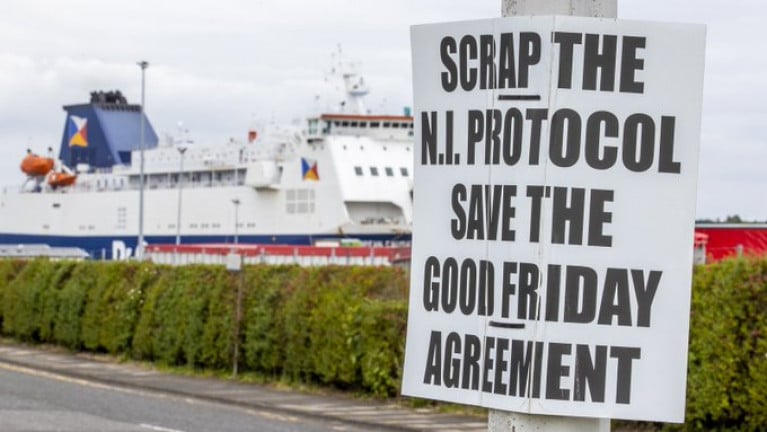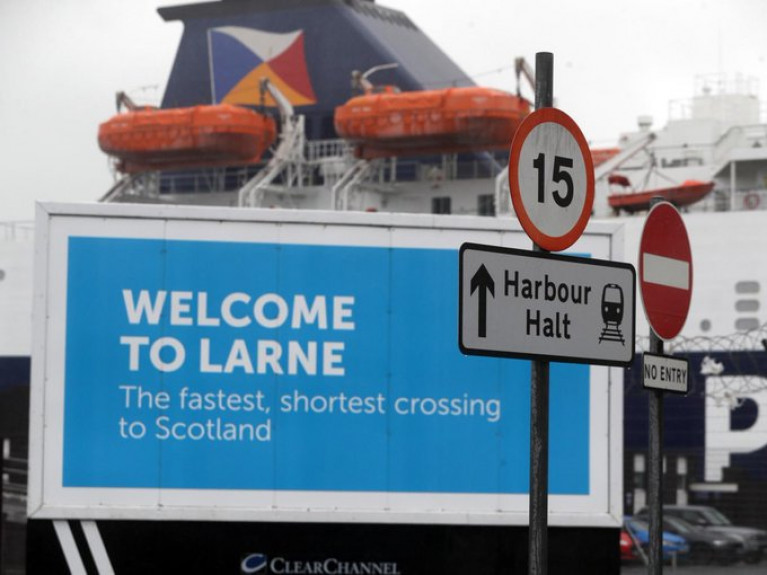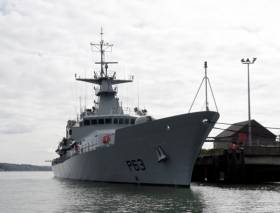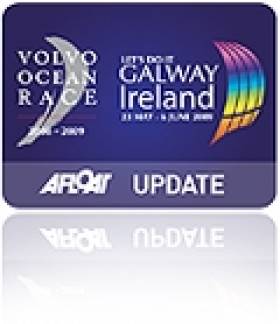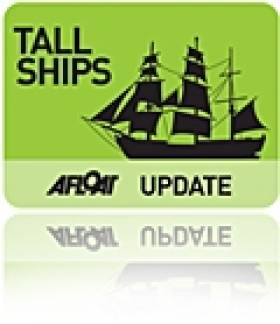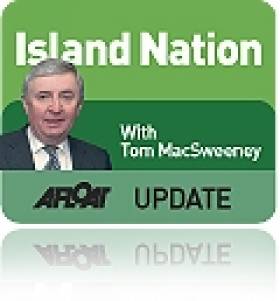Displaying items by tag: Taoiseach
The legislation on the Northern Ireland Protocol published by the British government yesterday, has been decribed by the Taoiseach as "anti-business and anti-industry".
Speaking on his way into Cabinet this morning, Micheál Martin said the action by the UK represented a "fundamental breach of trust".
He said he did not believe that the legislation was well thought out and does not represent the realities facing Northern Ireland businesses.
Mr Martin said that NI businesses were performing well under the protocol and called on the UK to resume negotiations.
However, he warned that there was an issue around trust, with "a lot" of EU leaders now concerned that the UK government cannot be relied upon to uphold any future agreements.
Minister for Foreign Affairs Simon Coveney said the controversial plans to override the protocol were a "new low" for British-Irish relations in the past 25 years.
Much more RTE News reports on this including reaction from the London Chamber of Commerce.
Taoiseach Warns Move to trigger NI Protocol Article 16 Would be ‘Irresponsible’ & ‘Reckless’
The Taoiseach Micheal Martin has warned the British Government that any move to trigger Article 16 of the Northern Ireland Protocol would be “irresponsible...unwise” and “reckless”.
As the Belfst Telegraph writes, the Irish premier told the Dail on Wednesday such a decision would have “far reaching implications” for the relationship between Dublin and London.
London and Brussels are currently locked in negotiations to try to redraw aspects of the protocol and cut some of the red tape it has created on Irish Sea trade.
Last week it was revealed discussions are taking place in a UK cabinet committee about the potential fallout for triggering Article 16 of the protocol as soon as next month.
“We have acted in good faith, I think the European Commission has acted in good faith, and a good faith response is required from the United Kingdom government,” Mr Martin said.
“In my view it would be irresponsible, it would be unwise, and it would be reckless to invoke Article 16 as a response to the proposals from the European Commission.
More here on this latest development.
Newest Naval Service Vessel To Be Twinned With Galway Next Month
#Navy - Taoiseach Enda Kenny will officiate the twinning of the new Naval Service vessel LÉ William Butler Yeats with the city of Galway on Monday 17 October, as the Connacht Tribune reports.
The City of the Tribes was previously linked with the LÉ Aisling, which was decommissioned this past summer and is now being proposed as the home of a floating museum in Galway Docks.
Designed by Vard Marine and built by Babcock Marine in Appledore, north Devon, LÉ William Butler Yeats is in the same class OPV90 as sister ships LÉ Samuel Beckett and LÉ James Joyce, delivered in 2014 and 2015 respectively.
On a visit to the new vessel in Haulbowline last month, Defence Minister Paul Kehoe described its arrival and entry into service as "another key milestone in the history of the Naval Service".
Taoiseach in Galway for Volvo Ocean Race Trophy Arrival
#VOLVO OCEAN RACE - Taoiseach Enda Kenny is currently at the VOR Global Village in Galway to open the International Sustainability Summit on ‘Enabling, Financing and Delivering Sustainable Growth’, ahead of the arrival of the Volvo Ocean Race trophy this afternoon.
The striking blue and silver prize, weighing 9kg and standing 70cm high, will drop from the skies during a spectacular parachute display to be staged by the Air Corps' Black Knights parachute team.
The five-member team, carrying the flags of the ten countries that have participated in the race, will parachute from an Augusta Westland AW 139 helicopter to a waterfront landing zone close to the Global Village in South Park at 5pm.
The national flags will be displayed in formation on the beach as the helicopter lands to deliver the trophy to Volvo Ocean Race CEO Knud Frostad and John Killeen, president of the local organisers Let’s Do It Global, in the presence of the Taoiseach.
The prize-giving ceremony for Leg 9 of the Volvo Ocean Race will take place on the main stage in the Race Village at 5pm.
Skipper Chris Nicholson and the crew of CAMPER with Emirates Team New Zealand, who crossed the finishing line seven minutes ahead of overall race winners Groupama, will be presented with their prize.
Haughey's Celtic Mist: A Stormy History
The Irish Independent today recounts the tumultuous history of the Celtic Mist - the yacht once owned by the late former Taoiseach Charles Haughey that recently took part in the Tall Ships Races has now begun a new life as a research vessel with the Irish Whale and Dolphin Group (IWDG).
"But as the boat continues to ride the waves off the west coast of Ireland it will forever be associated with the shenanigans of 'Champagne Charlie'," writes John Costello.
Though controversial for many - from its purchase in 1987 and its subsequent lavish outfitting to the extravagance of the lobster and vintage wine that were always available on board - there are also fond memories, particularly in Dingle, where Haughey helped to transform the harbour.
And who can forget the time when Loyalist terrorists threatened to blow up the yacht in a bid to avenge the death of Lord Mountbatten?
The Irish Independent has more on the Celtic Mist's storied past HERE.
The yacht once owned by the late former Taoiseach Charles Haughey will be only Irish entrant in the Tall Ships Races at Waterford later this month.
The Irish Times reports that Celtic Mist will take part in the first leg of the race to Greenock in Scotland before it is fitted out for its new life as a research vessel for the Irish Whale and Dolphin Group.
The IWDG's Simon Berrow confirmed that it has accepted the Haughey family's offer of the yacht as a gift to support its study and conservation of whales, dolphins and porpoise in Irish waters.
He said the group first had to explore the feasibility of running such a large vessel before it could accept the "very generous offer".
The Irish Times has more on the story HERE.
Haughey Yacht 'Celtic Mist' is For Sale
The 52 footer that has a cruising speed of 6 knots has been put up for sale by the family of the former Taoiseach with an asking price of €175,000.The boat is lying on the Isle of Wight.
The full details and photos from the broker are HERE.
The sale has created considerable media interest. Examples HERE and HERE.
Could Waterford Lead a Tall Ships Revival?
I am aware that a number of groups are examining the possibility of launching a national sail training programme. I wonder if Waterford could be the place to lead it and be the base for national sail training. The marine sector suffers from the neglect and disregard of a disinterested Government so any revival will have to be outside of State support.
Waterford staged a hugely successful visit of the Tall Ships Race in 2005 and has been honoured with the hosting of the Race start next year. Bertie Ahern as Taoiseach snubbed the Race visit in 2005. It showed how little respect he had for the maritime sector. Half-a-million people visited the city, but Bertie couldn't be bothered to do so.
The city has been encouraging young people to get experience of crewing aboard Tall Ships. Twenty-year-old David Murray, a business information systems student at University College Cork, is becoming a sail training "veteran" through experience gained over the past two years.
He first 'shipped out' last year aboard the Tenacious operated by the Jubilee Sailing Trust of the UK, a registered charity which also operates the Lord Nelson. His first voyage, following which he sailed the north coast of Scotland on the Lord Nelson and this year became a Bosun's Mate, taking more responsibility aboard the Nelson on a voyage from Southampton to Glasgow. Then he joined the Dutch three-masted schooner, Eendracht, from Kristiansand in Norway to Hartlepool in the UK, where he disembarked and re-joined the Tenacious, again as Bosun's Mate, sailing to Bruges in Belgium and onto London. A few days later he was back aboard the Lord Nelson as Bosun's Mate from Falmouth to Milford Haven in Wales and then to Waterford, from where the Tall Ships Race will start next year,
"It's been a brilliant experience. I've met a great mix of people. Sail training is for everyone," he said. "It's been a very busy but great couple of summers with Tall Ships and I'm really looking forward to next year, especially with Waterford again hosting the fleet and crews from around the world coming to the city. I strongly recommend sail training and the fact that the races start from Waterford next summer makes it even easier for Irish young people to get involved."
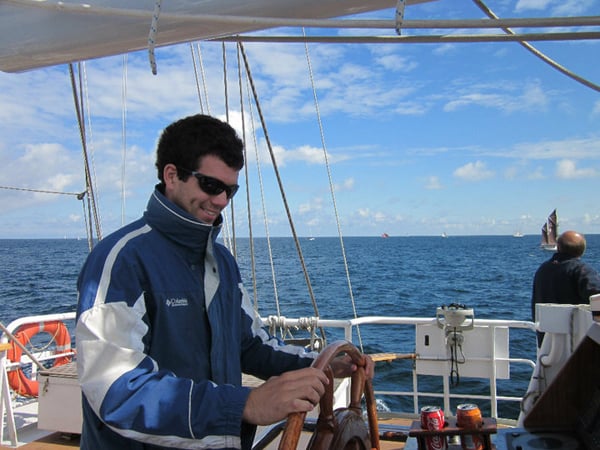
David Murray is a Tall Ships veteran at the age of 20
David comes from Butlerstown in Waterford. His pleasure in the experience of tall ship sailing underlines what has been lost by the shameful behaviour of the Government in closing down the sail training programme.
It will be a national disgrace if there is not an Irish tall ship flying the Tricolour at next year's Tall Ships Race start in Waterford. The city has done magnificent work in putting Ireland to the forefront in the world of tall ships. Perhaps Waterford should be the base for the creation of a new national sail training system.
• This article is reprinted by permission of the EVENING ECHO of Cork where Tom MacSweeney writes maritime columns twice weekly. Evening Echo website: www.eecho.ie



























